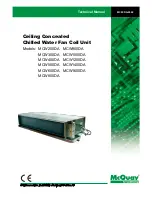
15
Remove all foreign objects from the work area
before using the machine. Stones, glass, branches
and similar items may damage the tiller. Also check
the bolts on the tiller are tightened.
Start the motor as per the instructions below. Stand
clear of the machine’s moving parts.
Never attempt to move the machine in any way
other than intended for normal use while the motor
is running.
The tiller is designed for use in vegetable gardens and
flowerbeds. Ensure that you are familiar with these
instructions before operating the machine, in particular
the motor start and stop procedures.
Fig. 13A: To use the clutch handle, the control stick
must first be activated. By tilting the control stick to the
right side and then activate the cluth handle, the tiller
will move forward or backwards, depending on the
selected gear (Fig. 15). In order to change gear, the
clutch handle must be released, before a new gear is
selected with the gear rod.
Always release the clutch handle before
changing gear!
Fig. 13B: Adjustment of the speed on the throttle control
can be made without releasing the clutch handle first.
Pay attention while reversing. It is important that the
area is cleared, for any obstacle before reversing.
Never reverse the tiller against a wall, tree or any other
fixed obstacle.
Variable cultivating speed
The rotation speed of the blades is variable. There are
8 different speeds available.
This ensures the best result no matter in which weather
it is being used how however the soil conditions are.
Adjustment of speeds
The gear rod have 5 positions (see Fig. 14 and 15)
N: Neutral (2 positions)
R: Reverse
H: High speed gear
L: Low speed gear
On the throttle control on the handle, there are 5
positions: STOP-1-2-3-4.
Position 1-2-3-4 offer 4 speeds, which can be selected
in both high speed gear (H) and low speed gear (L).
Totally 8 speeds for cultivating and use with different
accessories.
General advises for working speed when
cultivating:
H4
Cultivating the lawn
H3
Cultivating soft soil
H1/L4 Cultivating hard soil
Soft and moist soil:
A relatively high working speed should be used. It
makes the machine work forwards and it is easier to
avoid that the machine is digging itself down.
By using a higher speed, it prevents soil and mud to
stick between the blades and a better cultivating result
will be accomplished.
Hard soil / soil with many stones:
A relatively slow speed should be used. It makes the
machine work downwards and thereby gives a more
steady work with less vibrations.
The exact adjustment of speed, should match the user
and the local conditions.
See Fig. 16 for more recommendations of speed
depending of use.
Variable working width
The working width of the tiller blades can be adjusted
for individual needs.
3 sets of tiller blades are mounted in each side.
Each set can be removed/attached with cotter bolts -
depending on needed working width.
It makes it possible to cultivate in narrow areas between
plants or cultivate bigger areas much faster..
The working width can be adjusted like this:
35 cm Inner blades
62 cm Inner outer blades
68 cm Inner middle blades
90 cm Inner middle outer blades
Operation zone
While the machine is being operated and the motor is
running, do not leave the operation zone marked fig 19.
If it is necessary to leave the operation zone, for
example to attach an accessory, first stop the engine.
It is normally necessary to drive the tiller over a section
of earth 2-3 times from different directions. Do not till
very wet soil, as clods of earth will form that are difficult
to break up.
Adjusting the handle
Fig. 10: The handle can be adjusted from side to side
by releasing the lock (A). Choose the preferred position
and press the lock (A) back again.
Fig. 11: The handle height can be adjusted up/down by
releasing the lock handle (B). Choose the preferred
position and press the lock-handle (A) back again.
Adjusting the wheel / depth skid
Fig 12: During operation, it may be necessary to raise
the support wheels, as it is connected to the depth skid.
There are 4 positions.
Raising the support wheels
Raise the depth skid if needed. Press the rod (C)
forward with the foot to release the wheel assembly. Let
the handle fall downwards, so that the wheel assembly
is pushed up into a higher position. Remove the foot
from the rod (C) to lock the wheel assembly into
position.
Lowering the support wheels
Press the rod (C) forward with the foot to release the
wheel assembly. Lift up the handlebar, so that the
wheel falls down into a lower position. Remove the foot












































